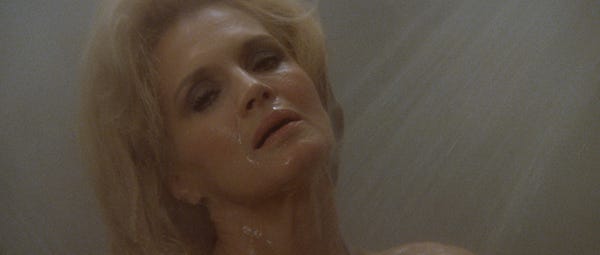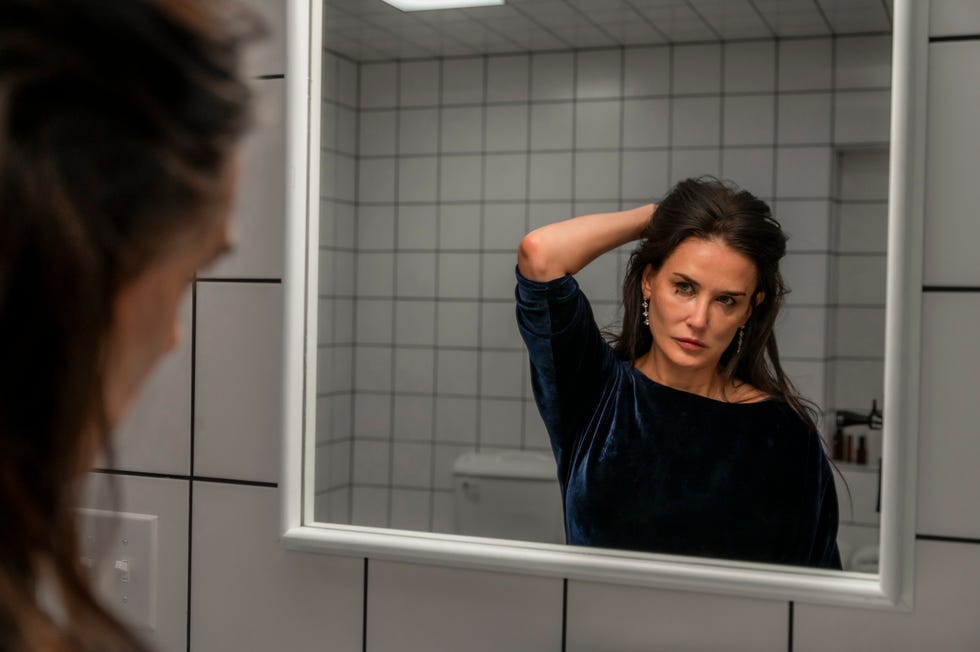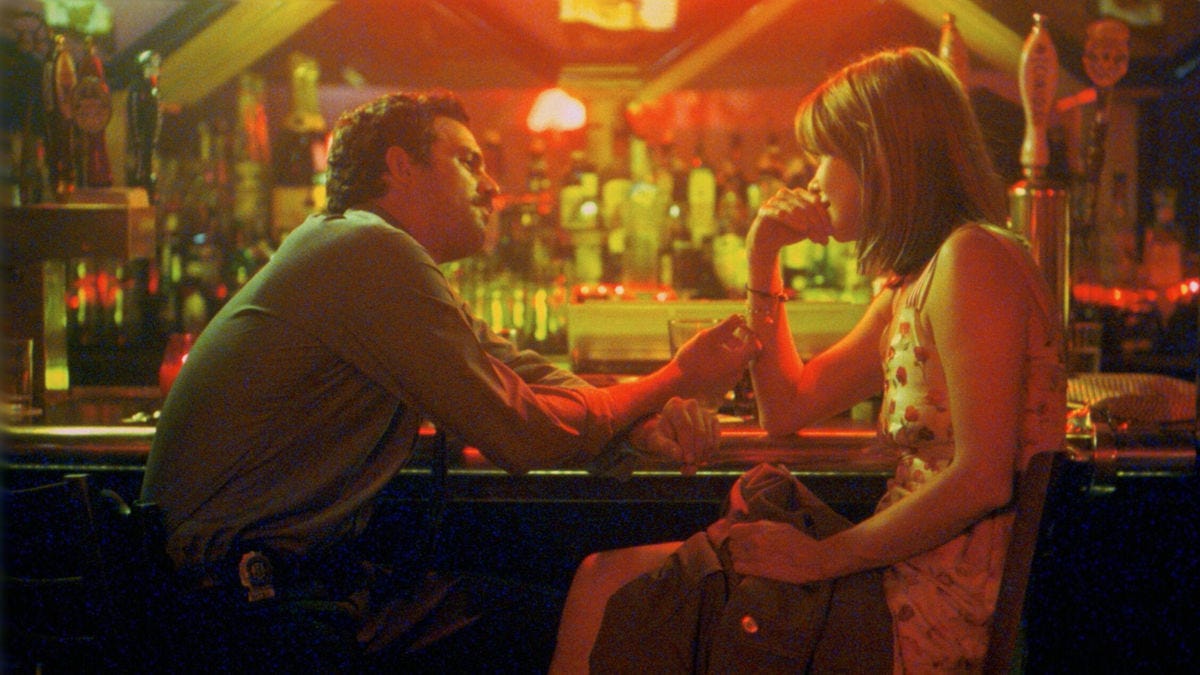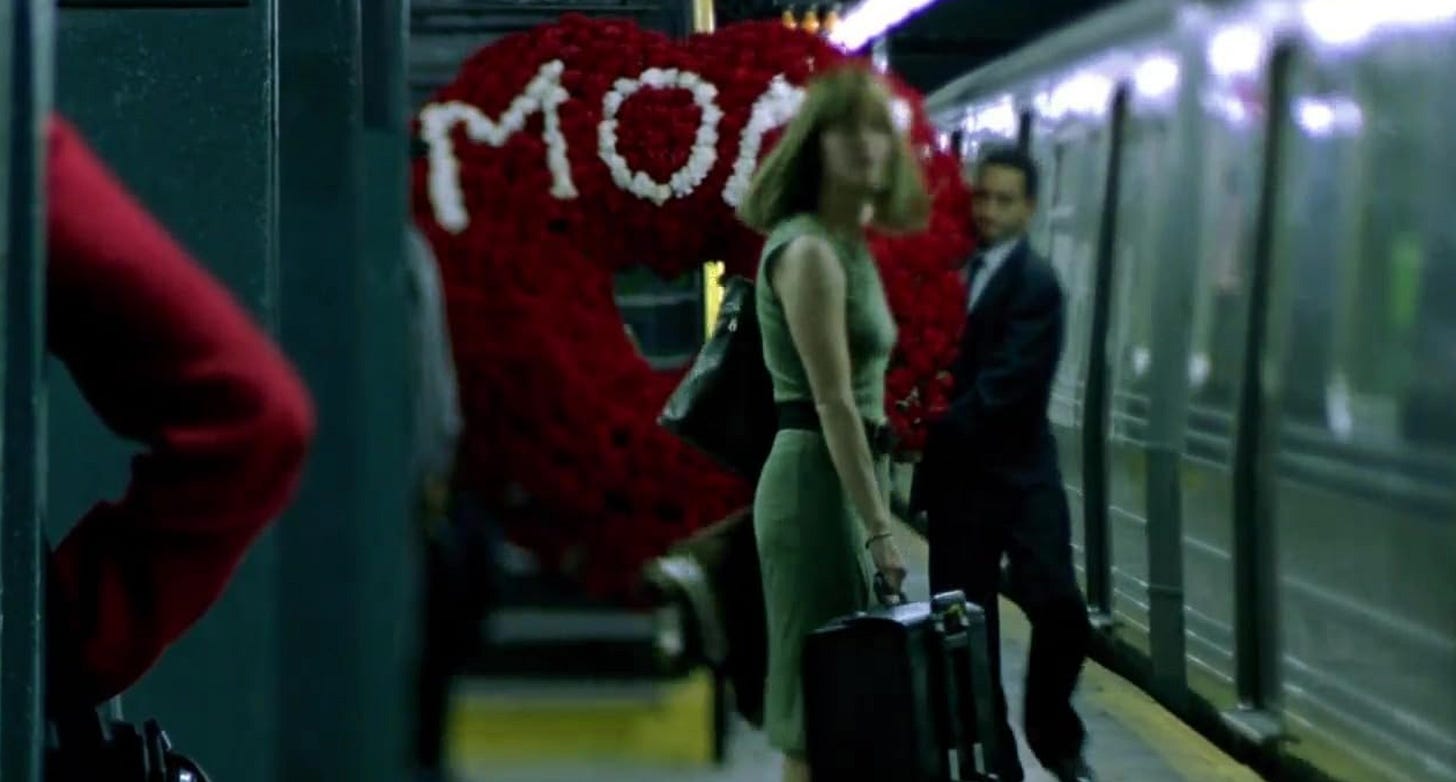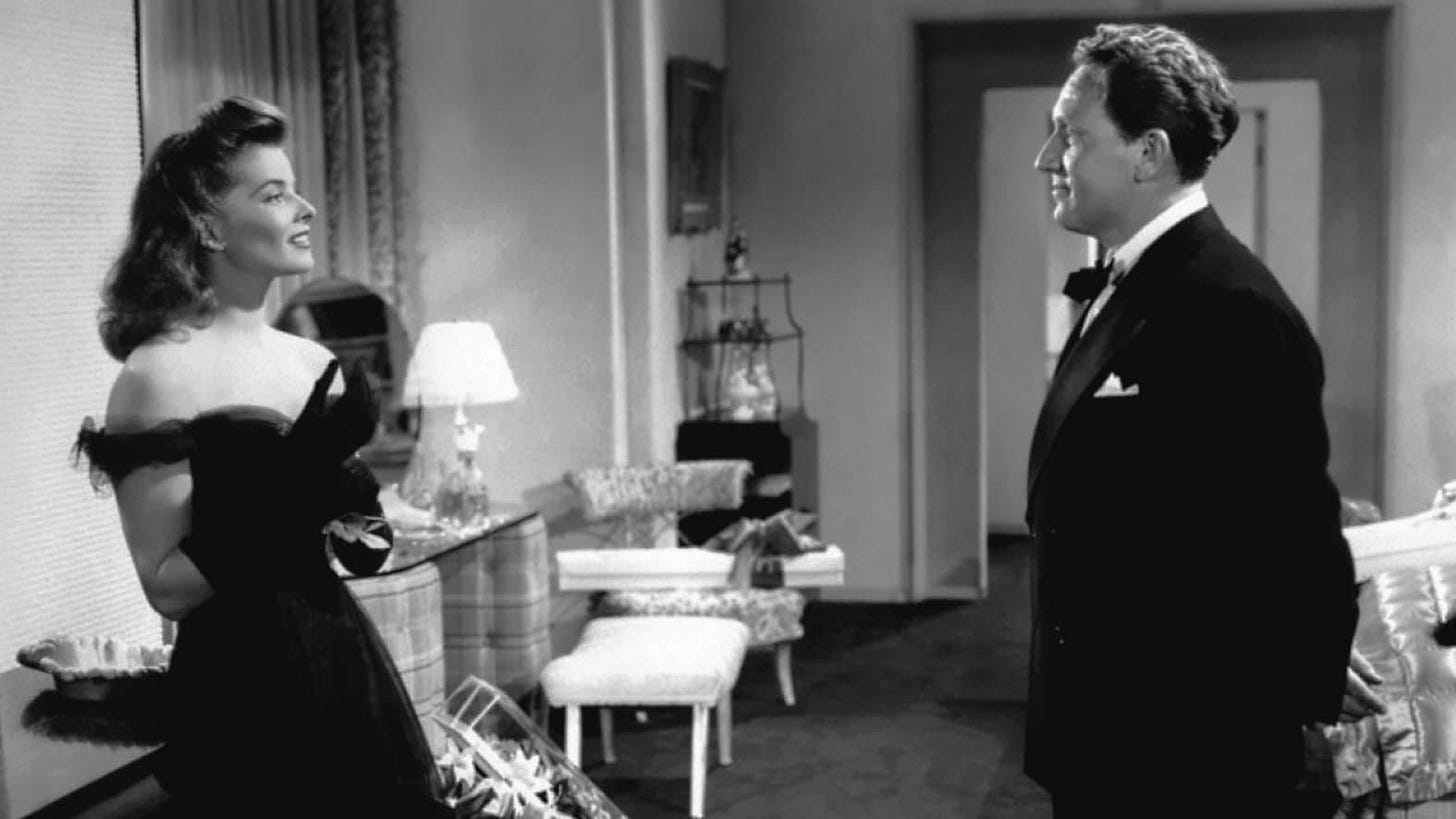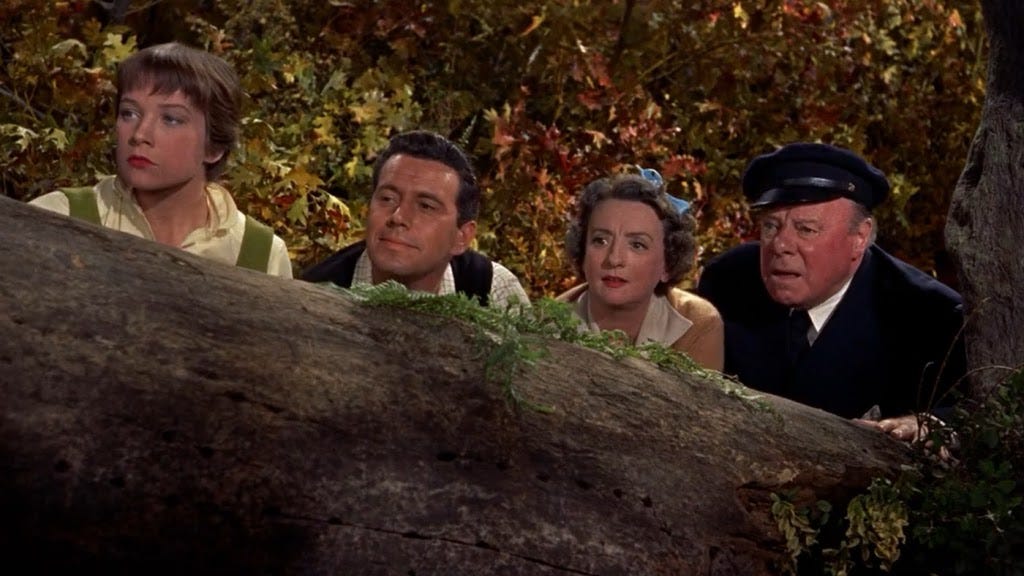Movies of the Month: October
Coralie Fargeat by way of Brian De Palma, in defense of Edgy Meg Ryan™, etc.
Happy Halloween! First off, ICYMI: I watched and reviewed every Scream sequel a couple weeks ago. I’m really not a horror girlie, but October’s selection of movies might say otherwise. Seasonal spirit, I guess?
Let’s get into it:
The Substance (2024, dir. Coralie Fargeat) — Babe, wake-up, the 2025 Academy Award for Best Makeup and Hairstyling frontrunner just dropped! Where do I even begin? I adored this film, though I’ll reiterate the advice my friend Angela (hi, Ang!) got from her brother on our way to see it: don’t eat, especially during the first half.
A co-production between the United States, France, and the UK, The Substance (2024) premiered at the Cannes Film Festival this spring, where it garnered an eleven-minute standing ovation. Filmmaker Coralie Fargeat took home the award for Best Screenplay, with performances from Demi Moore, Margaret Qualley, and Dennis Quaid rightly receiving critical acclaim. The film focuses on Elisabeth Sparkle (played by Moore), an aging actress unceremoniously fired from her job as the host of an aerobics TV show on her 50th birthday. Her producer, Harvey (played by Quaid in a role that I fear has ruined his sex appeal for me), thinly veils his desire to trade her in for a newer model, saying that “everything stops” for women at 50.
As freelance film critic Tomris Laffly describes in a piece for ELLE: “It’s around that time that a mysterious encounter introduces her [Elisabeth] to ‘The Substance,’ a freaky, self-administered injection that births (through a gruesome, spine-splitting sequence) an alternate and much younger version of herself we’ll come to know as Sue (an electric Qualley). There are only two rules to follow. First, she has to remember that the two versions are still one person — there is no individual ‘Sue’ or ‘Elisabeth.’ And the second is, only one version will be out in the world at one time, while the other hibernates in a coma-like state. At the end of each week, it’s time to switch. Absolutely no exceptions.”
Many people on and beyond Letterboxd have described The Substance (2024) as Barbie (2023) by way of body horror originator David Cronenberg, with its French filmmaker, Coralie Fargeat, acknowledging the influence of Cronenberg, John Carpenter, and David Lynch on her work. The Substance operates in a genre originated by Cronenberg, draws on prosthetics pioneered by Carpenter. A candy-coated color palette juxtaposes with sinister flashes of the city at night, interspersed with flickers of palm trees that seem to signal a Lynchian Los Angeles. Fargeat, to me, however, emerges as a daughter of Brian De Palma above all else, the latest in an exclusive line of horror auteurs.
Where Joan Didion copied Ernest Hemingway’s sentence structure only for Bret Easton Ellis to do the same — and apply it to coked out LA teens in Less Than Zero (1985) —, Fargeat reanimates certain signatures De Palma borrowed from Alfred Hitchcock, creating a filmic lineage comparable to the aforementioned literary one. Each successive application — from Hemingway to Didion to Ellis, from Hitchcock to De Palma to Fargeat — marks a new expansion, adds a new layer of meaning derived yet distinctive from its original form. In The Substance, an early shot lingers over Demi Moore’s body in the shower, a comparable image to De Palma’s literally and figuratively explicit homage to Hitchcock in Dressed to Kill (1980). More overt nods to De Palma emerge as The Substance swells toward its disturbing conclusion, but the aesthetic ancestry of Fargeat’s initial shower scene most compels me.
Both Moore’s Elisabeth Sparkle and Dickinson’s Kate Miller feel a particular flavor of sexual frustration, one sparked by men who consider age a neutering force in women. Fargeat, however, draws focus to perceived imperfections, refracting De Palma’s shot through a female gaze. As she tells ELLE: “There are two different relationships with nudity in the film…The one in the bathroom of Elisabeth’s home is the symbol of the relationship she has with herself. It’s the place where nobody looks at her, there is no gaze. She is just judgmentally facing herself in the mirror. Nothing is sexualized. This led me to shoot it in a very specific and internal way, in this white, transformational chamber that is her bathroom.”
Fargeat establishes the audience as a particular kind of voyeur, an observer of Elisabeth across protracted internalized moments. Dialogue emerges only when necessary, replicating the sensation of reading a well-crafted literary fiction novel on screen. But external perception also propels the plot, as Fargeat underscores the perceptual scrutiny women face, a different dialect at every age. Describing “the second type of nudity…conceived in complete contrast,” she explains: “I really wanted to express that when you’re a woman, your body is everything but neutral in the public space…It’s constantly scrutinized, judged, analyzed, fantasized, sexualized. And you can’t ignore it. It [also defines] how we are allowed to invest in the world…It’s a super powerful jail that prevents us from taking up space. That inequality is so internalized and the weapons that are internalized are the strongest ones.”
Where to Watch: ~a theater near you~, MUBI (subscription)
In the Cut (2003, dir. Jane Campion) — Based on the 1995 novel by Susanna Moore, this turn-of-the-millennium neo-noir features rom com queen and king Meg Ryan and Mark Ruffalo playing against type. Ryan steps into the role of Frannie Avery, an NYU English professor obsessed with linguistics, while Ruffalo plays Detective Malloy, an NYPD cop in the homicide department. The two come together in a sexually fraught union after a woman’s diced up body emerges in the flowerbed behind Frannie’s Lower East Side apartment. That initial murder expands into a string of femicides and animates a dark reflection of Manhattan, accentuating the inherent danger that accompanies womanhood.
When it first premiered, In the Cut (2003) garnered near-universal slander. It became known as the film that “killed” Meg Ryan’s career, a desperate attempt at “edginess.” In a recent review for The New Yorker, Doreen St. Félix calls for a rightful reclamation of the film, writing: “To be a woman in the universe of In the Cut is to be hunted. Marriage is no refuge. Objections to the movie ranged from aesthetic to moral. Its soft-focus visual world — the sequences of sunbursts obliterating any view of downtown and its people, with those people enveloped in grease and heat — was too pretentious. There was also the upset about Ryan, who shows her breasts — a sweetheart made impure through pulp fiction. The prevailing narrative was that [filmmaker Jane] Campion had done the erotic thriller wrong, that her exploration of the hunted woman reeked of a shallow ‘post-feminist’ caprice. In an era where we crave abject pleasure on the screen, In the Cut is ripe for reclamation.”
Campion wrenches the audience into her vision of New York, refracts the city through a lo-fi lens. Everything appears out of focus, an aesthetic device that sets the mood and propels the plot simultaneously. Toward the start of In the Cut (2003), per St. Félix, “Frannie watches a man receive a blow job; most of what we see, of the act, is the intertwining of hands — blue fingernails for the woman, a spade tattoo on the man’s wrist. It’s a seeming cliché — the inversion of the male gaze, the embrace of female perversity — that Campion quickly complicates. When Frannie leaves the bar, she’s being stalked. The perspective is low and furtive. The camera and her stalker seem one.” This moment introduces the fractured perspective that goes on to shape the film. Focus flips between that “low” third-person and Frannie’s first-person, concurrently replicating and dimensionalizing Moore’s prose.
In my brief review of the novel, I describe In the Cut (1995) as “a masterclass in writing sex,” a distinguishing factor that Campion translates from the page to the screen. As St. Félix writes: “The sex scene in In the Cut (2003) is famous. Malloy gives Frannie oral sex first; an older woman who broke him in as a teen-ager taught him the art. The sexual culture of the couple, if they are a couple, cannot be understood through anything like sex positivity…Malloy’s seduction is an intrusion to Frannie and her high expectations. His sexiness is inseparable from his coarseness, as the film brings both Malloy and Frannie deeper into all sorts of peril.” Campion also dials up the relationship Moore establishes between Frannie and her half sister, Pauline (played by Jennifer Jason Leigh); as Roger Ebert writes: “The movie is leisurely, as thrillers go, but I liked that, especially in the intimate conversations of the two sisters, who sound and behave like two women who have understood each other very well for a long time. Ryan and Leigh have a verbal and emotional shorthand that creates a kind of conspiracy against the mechanics of the plot: Sometimes even when you’re in danger you can still feel horny.”
Speaking of danger, my one notable critique of In the Cut (2003) centers on its tenuous grasp of horror aesthetics. Death lurks, then emerges in full force. When Frannie finally steps into a particularly bloody scene (the specifics of which I won’t spoil), corny special effects edge an emotionally devastating moment into the realm of camp, as I see it. Fear, which has come to characterize the film up until this point, diffuses, then, thankfully, rebuilds. But Campion, from my perspective, would have benefitted from showing less rather than more during the movie’s goriest sequence. Nonetheless, In the Cut (2003) succeeds in distilling the quiet terror that comes with inhabiting a female body, exposing “fear and its erotic potential,” per St. Félix.
Where to Watch: Hulu (premium subscription), YouTube (primetime subscription), Amazon Prime Video ($3.59), Paramount+ (subscription)
Woman of the Year (1942, dir. George Stevens) — RIP Tess Harding, you would have loved 2010s girlboss feminism. Woman of the Year (1942) centers on international affairs correspondent Tess (played by Katharine Hepburn) and sports writer Sam Craig (played by Spencer Tracy), both reporters at the fictional New York Chronicle. The daughter of a diplomat, Tess speaks multiple languages and maintains a whirlwind social-professional life hybrid from and beyond her Park Avenue apartment. When the two fall in love — and eventually marry —, distinctions in gender and social stature splinter the foundation of their relationship.
As Alex Dueben writes in a 2017 Vulture review: “Anyone who has seen hundreds of romantic comedies and thousands of sitcom episodes will find the dynamics very familiar. But that tension of the two being from very different worlds — and having habits that don’t always complement each other’s — and struggling to make it work remain and really give the film its heart…The first two acts are funny and the third act is less funny as we tend to the serious business of the strong woman getting her comeuppance and having to compromise with and crawl to the man.” While it coalesces to a middling conclusion, Woman of the Year remains a must-watch early-days rom com for two key reasons: Tracy and Hepburn.
Masters of screwball comedy, the pair undoubtedly carries the film, from Tracy inching on stage mid-speech to Hepburn fumbling to make breakfast. My personal favorite scene features Sam taking Tess to a Yankees game that she struggles to understand (she’s so me). The film marks the first of nine collaborations between Hepburn and Tracy, who would go on to have a 25-year affair ending only in his death; Tracy died of a heart attack two weeks after wrapping filming on their final movie together, Guess Who’s Coming to Dinner? (1967). Lauren Bacall, a close friend of the couple, speaks extensively about their partnership in her memoir, By Myself and Then Some (2005), describing Hepburn as “blindingly” in love with Tracy and detailing the emotional fallout from his death; Woman of the Year captures that care and chemistry in its incept.
Where to Watch: Amazon Prime Video ($2.99)
The Trouble with Harry (1955, dir. Alfred Hitchcock) — Hitchcock does comedy! The Trouble with Harry (1955) opens with a dead body in the woods, with resident after resident of sleepy small town Highwater, Vermont coming face to face with a lifeless Harry Thorp (played by Philip Truex) on an autumn afternoon. Each person blames themself for his death, questioning whether their individual actions — from a hiking boot to the head to a stray shot from a hunting rifle — caused his demise. The residents band together to decide what to do about the body, or rather “the trouble with Harry,” as the authorities start asking questions.
When it first premiered at The Paris Theater, The Trouble with Harry received mediocre reviews, though it now holds an 88% on Rotten Tomatoes. In an interview with Roger Ebert, Alfred Hitchcock expresses his disappointment with the film’s reception, explaining: “It was an English-type comedy of the macabre, which I made in 1955. All about a body that gets dug up and buried about four times. I shot it in Vermont, during the fall, to get all the autumn colors: yellow, red, there was beauty in the trees. And then a French intellectual [French filmmaker and actor François Truffaut] asked me why I shot it in the autumn. His theory was that I was using the season of decay as a counterpoint to poor Harry’s own decay…The only message in the picture…was that you should never mess about with a dead body — you may be one yourself someday.”
Ultimately, there’s no such thing as a bad Hitchcock film, but this one, to me, was only okay. The premise has the potential to hum in the manner of a Muriel Spark novel, but the execution frequently falls flat. Per Bosley Crowther’s 1955 New York Times review: “It is not a particularly witty or clever script that John Michael Hayes has put together from a novel by Jack Trevor Story, nor does Mr. Hitchcock’s direction make it spin. The pace is leisurely, almost sluggish, and the humor frequently is strained. The whimsey inclines to be pretentious, such as Miss Natwick’s cheery reply to Mr. Gwenn’s expressed hope that her father's death was peaceful: ‘He was caught in a threshing machine.’ Or again, when the two are out exhuming the freshly buried corpse, she says, ‘After we've dug him up, we'll go back to my place and I'll make you some hot chocolate.’ That's the way it goes through the picture, to a rather obvious end.” Also, minus five points for the constant presence of a dead rabbit.
Where to Watch: Amazon Prime Video ($3.99)
Ghostbusters (1984, dir. Ivan Reitman) — As a Letterboxd rando puts it: “A movie with no emotional core, no character arcs or growth. No one learns anything. It’s not saying anything. It shouldn’t work but somehow it’s perfect. No one has been able to replicate it and they should stop trying.” Ghostbusters (1984) is, simply put, a fun, silly film; I wouldn’t go so far as to call it perfect, but it’s an enjoyable three-star movie with, of course, an absolute banger of a theme song.
For those of you unfamiliar, Ghostbusters centers on a trio of disgraced Columbia University professors — Peter Venkman (played by Bill Murray), Ray Stantz (played by Dan Aykroyd), and Egon Spengler (played by Harold Ramis) — who start running a ghost extermination business out of a Tribeca firehouse. They get catapulted to fame, sharing tabloid headlines with Princess Diana (lol), before facing their most difficult case yet: the possessed Central Park West apartment building of Lincoln Center cellist Dana Barrett (played by Sigourney Weaver).
The film’s concept originated from conversations between Aykroyd and John Belushi prior to the latter Saturday Night Live star’s 1982 overdose. Aykroyd then rewrote the script with Ramis, keeping it rooted in the same flavor of sketch comedy that defined the original idea. The result? A big-budget picture that holds tight to offbeat humor. As Roger Ebert writes: “Ghostbusters is one of those rare movies where the original, fragile comic vision has survived a multimillion-dollar production. It is not a complete vindication for big-budget comedies, since it’s still true, as a general rule, that the more you spend, the fewer laughs you get. But it uses its money wisely, and when that, ahem, monster marches down a Manhattan avenue and climbs the side of a skyscraper…we’re glad they spent the money for the special effects.”
Where to Watch: Hulu (premium subscription), Amazon Prime Video ($3.99)
Okay, that’s all for now! Stay tuned for the November newsletter tomorrow.
xo,
Najet






